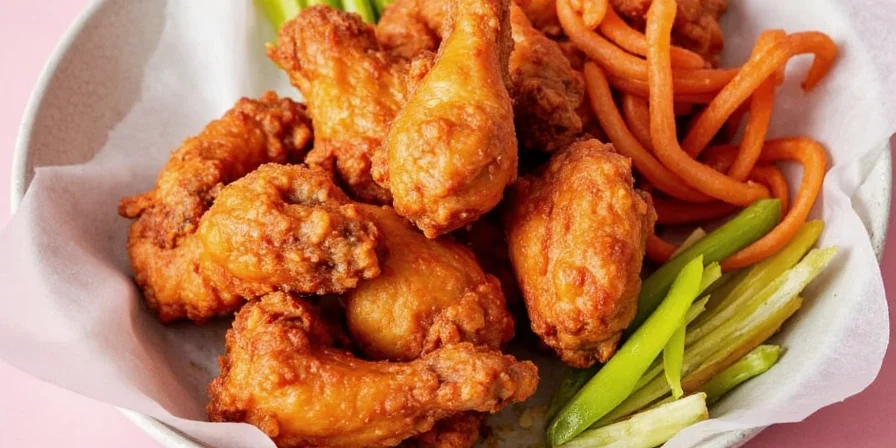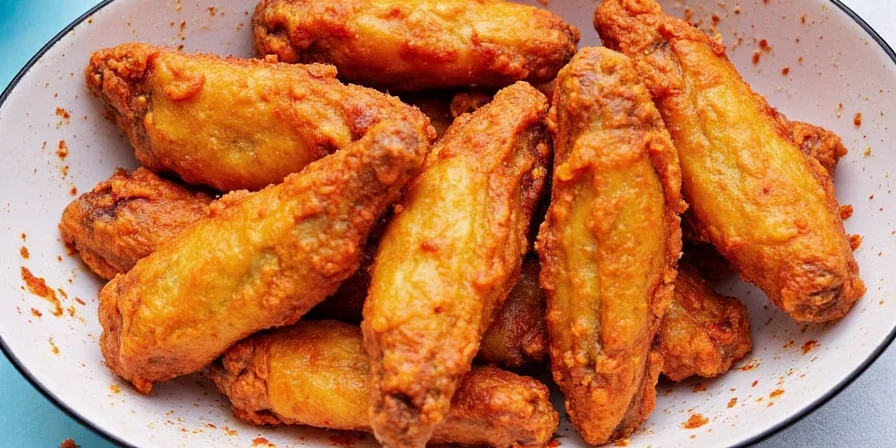Hot Wings, Cooler Heads: 10 Spicy (But Surprisingly Smart) Pairings for Baked Nashville Hot Chicken

A vibrant platter of baked Nashville hot chicken with a side of coleslaw and pickles.
Table of Contents
- Introduction: More Than Just Heat
- The Spice Science Behind Nashville Hot Chicken
- Top 10 Innovative Spice Pairings for Baked Nashville Hot Chicken
- Spice Meets Science: Why These Flavors Work Together
- Pro Tips for Perfectly Balanced Heat
- Conclusion: Let the Spice Party Begin!
Introduction: More Than Just Heat
If you've ever taken one bite of Nashville hot chicken and felt like your taste buds were on fire — but still went back for more — then you know this dish is more than just heat. It's a flavor explosion that tells a story of Southern soul, street food swagger, and spice bravado.
But here’s the twist: while cayenne pepper and cajun seasoning are classic players in this fiery drama, the real fun begins when you start experimenting with unexpected spices that don’t just bring the burn — they balance it, enhance it, and sometimes even steal the show.

Spice up your life (and your chicken) with these creative pairings.
The Spice Science Behind Nashville Hot Chicken
Traditional Nashville hot chicken gets its signature kick from a bold paste of lard, cayenne pepper, garlic powder, paprika, and salt. But what if I told you that this recipe was only the opening act?
Spices aren’t just about heat. They’re about complexity, contrast, and chemistry. When you introduce new ingredients into the mix, you’re not just turning up the dial — you're rewriting the entire flavor profile.
The science behind it? Capsaicin (the molecule responsible for spiciness) interacts differently with other compounds like tannins, sugars, and acids. That means the right pairing can mellow the heat or amplify it in surprising ways.
Top 10 Innovative Spice Pairings for Baked Nashville Hot Chicken
Ready to upgrade your chicken game? Here’s a list of spice duos (and trios!) that go beyond the standard heat and bring depth, balance, and a little bit of culinary magic to your plate.
| Spice/Ingredient | Why It Works | How to Use It |
|---|---|---|
| Szechuan Pepper | Adds a numbing effect that contrasts with the traditional capsaicin burn | Mix crushed Szechuan peppercorns into your dry rub |
| Sumac | Brings citrusy brightness to cut through richness | Sprinkle over fried chicken before serving |
| Cumin + Lime Zest | Elevates earthiness and adds a tangy zing | Add to marinade or finishing sauce |
| Turmeric | Offers warm, bitter notes and a vibrant color boost | Blend into oil-based spice paste |
| Fennel Seeds | Adds subtle licorice-like sweetness to balance heat | Toast and grind, then blend into coating mix |
| Black Garlic | Introduces deep umami that softens spice intensity | Mix mashed black garlic into dipping sauces or glazes |
| Coriander + Brown Sugar | Combines sweet and floral notes for a complex finish | Use in dry rub or glaze for baked chicken |
| Cardamom | Unexpected warmth and slight mintiness complement smoky flavors | Add a pinch to spice mix or honey drizzle |
| Gochujang | Korean chili paste brings fermented funk and slow-burn heat | Thin with water and brush onto baked chicken |
| Tamarind | Acidic fruit balances oily textures and soothes spice | Whisk tamarind paste into vinegar-based slaw dressing |

Experiment with these unique combinations to elevate your Nashville hot chicken experience.
Spice Meets Science: Why These Flavors Work Together
Let’s take a deeper dive into the kitchen lab. Each spice we’ve listed has a different chemical makeup that interacts uniquely with our taste buds. For example:
- Szechuan pepper contains hydroxy-alpha-sanshool, which triggers a tingling sensation by activating touch-sensitive neurons — basically tricking your brain into thinking it’s being tickled by the inside of your mouth.
- Sumac brings citric acid to the party, which helps neutralize capsaicin molecules clinging to your tongue, giving your palate a refreshing break between bites.
- Cumin and lime zest both activate olfactory receptors associated with warmth and freshness — a combo that makes your brain feel like it’s on vacation even as your mouth is on fire.
Pro Tips for Perfectly Balanced Heat
You don't have to be a flavor scientist to play with spice — just a brave cook with a curious palate. Here are some tips to keep things exciting without melting your guests’ faces off:
- Start low and build slowly. Add spice in stages and taste-test as you go. Remember: you can always add more, but you can’t take it out once it’s in.
- Pair heat with fat. Think sour cream slaw, avocado mayo, or buttermilk biscuits — all great at binding capsaicin and reducing perceived spiciness.
- Balance with sugar. A touch of honey or brown sugar in your spice paste creates a caramelized crust and smooths out sharp edges of heat.
- Use acid to refresh. Vinegar-based slaws, citrus spritzers, or pickle brine rinses help reset your palate after each spicy bite.
- Don’t forget texture. Crisp pickles, creamy dressings, and fluffy biscuits provide contrast and comfort that let spice shine without overwhelming.

The perfect sides can save your dinner guests — and your dignity.
Conclusion: Let the Spice Party Begin!
Baked Nashville hot chicken isn’t just a meal — it’s an experience. And now that you’ve got a whole toolkit of innovative spice pairings under your belt, there’s no reason to stick to the same old heat套路 anymore.
From the numbing buzz of Szechuan pepper to the bright pop of sumac and the deep funk of gochujang, the world of spice is wide open. So go ahead — experiment, taste, tweak, and most importantly, have fun with it.
Your next backyard cookout or dinner party might just become legendary… assuming your guests survive the first bite.

When the spice hits just right — laughter, tears, and unforgettable memories.











 浙公网安备
33010002000092号
浙公网安备
33010002000092号 浙B2-20120091-4
浙B2-20120091-4